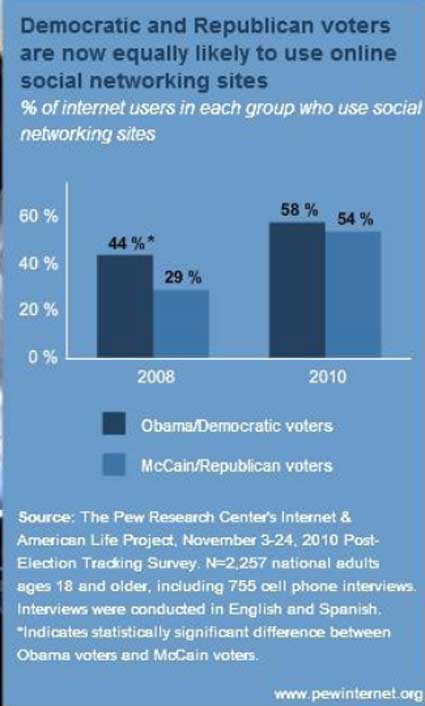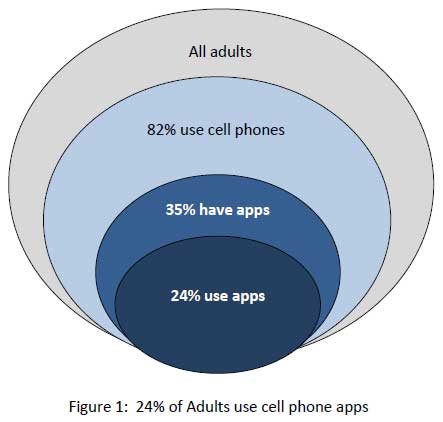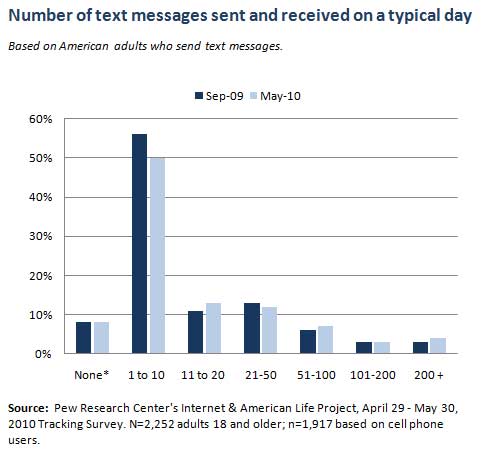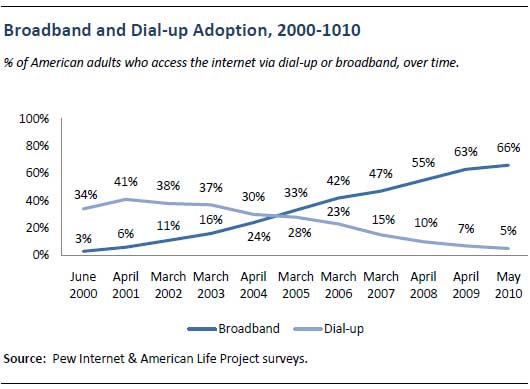Cell phone and wireless laptop Internet use have each grown more widespread over the last year, according to a new report from the Pew Internet & American Life Project.
Nearly half of all adults (47%) go online with a laptop using a Wi-Fi connection or mobile broadband card (up from the 39% who did so as of April 2009) while 40% of adults use the Internet, email or instant messaging on a mobile phone (up from the 32% of Americans who did this in 2009)
The report found the use of application not related to making calls has grown significantly over the last year. Compared with a similar point in 2009, cell phone owners are now more likely to use their mobile phones to:
*Take pictures-76% now do this, up from 66% in April 2009
*Send or receive text messages-72% vs. 65%
*Access the Internet-38% vs. 25%
*Play games-34% vs. 27%
*Send or receive email-34% vs. 25%
*Record a video-34% vs. 19%
*Play music-33% vs. 21%
*Send or receive instant messages-30% vs. 20%

"The growing functionality of mobile phones makes them ever-more powerful devices for on-the-go communications and computing," said Aaron Smith, Research Specialist and the author of the Pew Internet Project report.
"Cell phones have become for many owners an all-purpose chat-text-gaming-photo-sharing media hub that is an essential utility for work and a really fancy toy for fun."
African-Americans and English-speaking Latinos continue to be among the most active users of the mobile web. Cell phone ownership is higher among African-Americans and Latinos than among whites (87% vs. 80%) and minority cell phone owners use a much wider range of their phones’ features compared with white mobile phone users. In total, 64% of African-Americans access the Internet from a laptop or mobile phone, a seven-point increase from the 57% who did so at a similar point in 2009.
Young adults (those ages 18-29) are also heavy users of mobile applications, but older adults are gaining fast. Compared with 2009, cell phone owners ages 30-49 are significantly more likely to use their mobile device to send text messages, access the internet, take pictures, record videos, use email or instant messaging, and play music.
"The mobile user population is becoming more diverse over time and more people are relying on their cell phones as their primary form of wireless connectivity," said Smith.
"Even as laptops have become more commonplace in recent years, significant numbers of young adults and minority Americans are relying on a cell phone as their on-ramp to the mobile web."
Other highlights from the report include:
*More than half of cell phone Internet users (55%) go online from their mobile phone on a daily basis.
*Most wireless laptop users go online wirelessly at home, but six in ten wireless laptop users go online from multiple locations. One in five (20%) do so from home, work and somewhere other than home or work.
*Laptop computers are now nearly as common as desktop computers-55% of American adults own a laptop computer, just below the 62% who own a desktop machine. In the past year, laptop ownership among African-Americans has risen dramatically (51% of African-American adults now own a laptop computer).

























 "Three out of four experts said our use of the Internet enhances and augments human intelligence, and two-thirds said use of the Internet has improved reading, writing and rendering of knowledge," said Janna Anderson, study co-author and director of the
"Three out of four experts said our use of the Internet enhances and augments human intelligence, and two-thirds said use of the Internet has improved reading, writing and rendering of knowledge," said Janna Anderson, study co-author and director of the